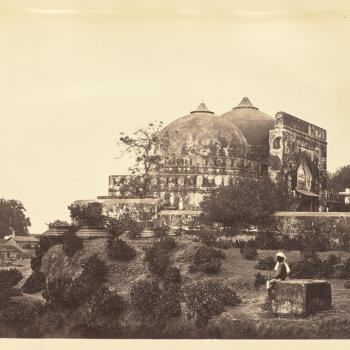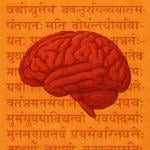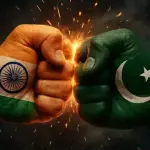November is an important month in World War 1 history. Below, here are a few details of India’s contribution to the Great War.
The world war ended the myth of invincibility of British Empire in India as the British faced many humiliating defeats during the war
The soldiers that returned after war raised the morale of masses.
India supported Britain based on its hints of granting self-rule. But the Rowlett act was clamped on India after World War 1. This led to the rise of national consciousness and soon the non-cooperation movement was launched.
Formation of USSR also led to the rise of communism in India with the formation of CPI, which imparted a socialist tinge to freedom struggle.
Contribution
The Empire’s biggest contribution was by India. This included 3.7 million tons of supplies, over 10,000 nurses, 170,000 animals, £146m of Indian revenue, and political support — including that of Gandhi, who helped recruit Indian volunteers in the face of nationalist opposition.
Indian Army: the largest volunteer force in the world, which provided 1.4 million troops to serve overseas. [Compared to the total size of the armies in World War 1 however, this is a small number. The entire British empire contributed 8.9 million soldiers, with a casualty of 3.9 million]
Of the 1.4 million volunteers, 560,000 were non-combatants such as bakers, blacksmiths, butchers, carpenters etc.
Over 74,000 were killed — five times more than the combined death toll from every war that India has fought since independence — and 80,000 were held prisoner.
Achievements
11 November 2018 marks the 100-year anniversary of the end of World War 1.
In World War 1, the Indian Army was called the Indian Expeditionary Force.
They served in Europe, East Africa, Mesopotamia, Egypt and Turkey.
Protected the northwest of India, buttressed British garrisons in Egypt, Singapore and China, as well as contributing to seminal battles of the Western Front, such as the Somme and Neuve Chapelle. At Ypres, in particular, Indian casualties were exceptionally high, compounded by the shock of German chlorine gas in April 1915.
Greatest impact in West Asia: with 60% of all Indian troops serving in Mesopotamia (modern day Iraq), and another 10% in Egypt and Palestine. On Jerusalem’s capture the next year, it was Indian Muslim troops who were tasked with protecting the Dome of the Rock.
At the outbreak of the First World War, the only professional army on the allied side was the British Army and the British Indian Army which comprised of Indian troops led by British officers.
The Indian Army grew from some 150,000 in 1914 to nearly 1.4 million by 1918
Indian (including present-day Pakistan) soldiers earned 11 Victoria Crosses, the highest British military award. There were 9200 total decorations for gallantry
The extent of cost to India due to World War 1 can be seen from the fact that India’s GDP contracted at around 4% every year of the war.
Battles During World War 1
In East Africa – From Sep 1914 – 1918
- Kashmiri rifles won many battle honors and gallantry awards
- The 129th (DCO) Baluchis fought from their arrival in January 1915 until their final action at Mwiti Water in November in 1917.
- The 40th Pathans also served throughout this period until February 1918.
- 57th Wilde’s Rifles, arrived at Mombasa in 1916 and fought for 14 months
The war conditions in East Africa – lack of water and food, Malaria and other tropical diseases such as Blackwater Fever caused more casualties than the enemy. On top of that animal attacks were also a problem
Egypt and Palestine – from 1915 – 1918
In 1915, the Indian contingent in Egypt were successful in forcing the Turks northwards when the Turkish forces set up defensive positions on the banks of Suez Canal.
By 1918, 2/3rd of the British army in Egypt were Indians. They advanced and seized Damascus in Syria and occupied Beirut and finally took Aleppo. In Oct 1918 the Turks finally surrendered. Without the Indian troops neither the initial defence of the Suez Canal nor the final victory over the Turks would have been possible.
Total Indian casualties reported – 10,936
France & Flanders (Casualties – 33,000 approx.)
First Battle of Ypres – Oct 1914
The First Battle of Ypres in Belgium was where the Indians first fought as part of the Western Front.
It was here where the first Indian Victoria Cross was won by Sepoy Khudadad Khan of the 129th Baluchis on 31st October 1914.
‘On 31st October, 1914, at Hollebeke, Belgium, the British Officer in charge of the detachment having been wounded, and the other gun put out of action by a shell, Sepoy Khudadad, though himself wounded, remained working his gun until all the other five men of the gun detachment had been killed.’
Neuve Chapelle Attack
On 28th October 1914, the 47th Sikhs, 9th Bhopal Infantry and the 20th and 21st companies Sappers and Miners fought in the small village of Neuve Chapelle in France which was later also the scene of a major battle in 1915.
Battle of Festubert, November 1914
This was the first time where the Indian troops fought collectively as the Indian Corps. There were heavy losses. But the Indian troops were determined to push forward to recover the lost trenches from earlier battles.
The Battle of Givenchy, 16-22 December 1914
There were more heavy casualties in Givenchy where the Indian Corps was ordered to go on the offensive and held on to the German trenches in appalling conditions.
The Germans retaliated with detonating a series of mines followed by hand to hand combat on 20th December.
Indian troops fought for around 30 hours non-stop before reinforcements arrived two days later.
Battle of Neuve Chapelle, 9-10 March 1915
The Meerut Division of the Indian Corps and IV Corps was the first planned British offensive in March 1915.
Poison Gas and ‘Second Ypres’, 22 April 1915
The second battle of Ypres which began on 22nd April was the first time when poison gas was used in the war. Heavy losses were sustained by the 3rd Lahore Division during an attack on 26th April. Although the troops fought with great gallantry, none managed to actually reach the German trenches. The exact location of the Germans was unknown and it was later found that the Indian troops were too far to charge.
Jemadar Mir Dast who was attached to the 57th Rifles was awarded the Victoria Cross as he rescued eight of his wounded comrades despite being wounded by the effects of gas himself.
Battle of Aubers Ridge, 9 May 1915
Around 2093 troops were killed during this battle where the strategy was to carry out a surprise attack by two separate forces to meet at Aubers Ridge to cut off German forces in the triangle Neuve Chapelle-Aubers-Fauquissart.
Action at Piètre, 25 September 1915
This was the last battle for the Indian Corps on the Western Front, one of four holding actions that took place at a distance from the battle of Loos.
Departure of Indian Infantry Units
By the end of 1915, it was decided to break up the Indian Corps and dispatch all Indian infantry regiments on other fronts. Two cavalry divisions, however, remained in France till early 1918. The war dead are mostly commemorated on the Indian Memorial at Neuve Chapelle, some on the Menin Gate Memorial in Belgium or buried in cemeteries in France and Belgium.
Gallipoli – Gallipoli peninsula is situated in Turkish Thrace with the Dardanelles strait to the east and the Aegean Sea to the west. The importance of the battle here was to force passage of the Dardanelles with Allied warships, in order to force a Turkish surrender and end the war. This was not to be the case.
Australian Historian Professor Peter Stanley mentions in his recent book Die in Battle, Do not Despair – The Indians on Gallipoli, 1915 says that the Indian contribution was highly significant
More than 16,000 Indian troops mostly Gurkhas and Sikhs fought in one of the bloodiest campaigns lasting for 8 months.
Mesopotamia
Many of the campaigns in this region were fought by Indian units although this is hardly known by the general public. 700,000 Indian soldiers, many of them Muslim, fought in Mesopotamia against the Ottoman Empire, Germany’s ally.
Total causalities – 63,972
Chennai – The daring raid by a German ship, the SMS Emden
On September 22, 1914, exactly a month after what is now celebrated as Madras Day, the city became the only Indian one to face an assault by Germany and its allies – Hungary, Austria, the Ottoman Empire and Bulgaria.
Yet there is hardly a mention of the Indian contribution in most accounts of this crucial WW1 campaign.
A few news articles
Indian soldiers were sent in their cotton trousers, to face the harsh European winter and face the Germans, who were the most well-equipped army in the world. Also, all Indian soldiers were under-equipped as part of the British colonial policy. Their training and equipment were deliberately kept a generation back. In the first few months of the war, almost 50% of Indian soldiers lost their lives because of these issues.
Despite this, their skill was noticed by Douglas Haig, supreme commander of the British forces who said, “The arrival of (the Indian Corps) saved the situation” at a time when the battle of Ypres was at a crucial balance. One soldier wrote home: “The whole world is being sacrificed… It is not a war but a Mahabharat, the world is being destroyed.”
During the Battle of Neuve Chapelle, March 1915, the Indian Army provided as much as half of the attacking force. For the first time, Indian soldiers were fighting on European soil.
Soldiers Did Not Always Volunteer
Though the army was said to be voluntary, there are a few factors to consider. British rule had reduced so many Indians to abject poverty, and many were desperate for any means to make a living. As soldiers, they could at least send home some money instead of living a life of semi-subsistence.
There are also reports that in Haryana, for instance, the British blocked the irrigation water supplies of those who did not readily join the army.
People were also stripped naked and made to stand in front of womenfolk, or pushed into thorny bushes to stand there for hours, until they said “Yes, I’m ready for enlistment”.
Rabindranath Tagore commented sarcastically about the war: “We, the famished, ragged ragamuffins of the East are to win freedom for all humanity!”
PM Commemorated World War 1 Soldiers in Israel | Included in School Curriculum
Narendra Modi, in July 2017, was in Haifa, Israel, and commemorated the Indian soldiers who liberated the city from Ottoman Forces in 1918. The Indian Army commemorates September 23 every year as Haifa Day. Two Indian Cavalry Regiments were part of the Brigade that liberated the city. It is seen as the last great cavalry campaign in history. Four Indians were awarded for bravery here.
In 2012, the municipality of Haifa decided to immortalise these sacrifices made by Indian soldiers, many of whom are buried in Haifa cemetery, by including their stories in school curricula.
World War 1 Memorials to Indians in Other Countries
There are many war memorials where Indians are buried with soldiers of other nationalities. The below list however, is of memorials exclusively or majorly for Indian soldiers.
- Brighton, UK: “To the memory of all Indian soldiers who gave their lives for the King-Emperor in the Great War, this monument, erected on the site of the funeral pyre where Hindus and Sikhs who died in hospital at Brighton passed through the fire, is in grateful admiration and brotherly love dedicated.”
- Zehrensdorf Indian Cemetery, Germany: Located 40 km from Berlin, Zehrensdorf Indian Cemetery is the final resting place for 206 Indian soldiers who died in captivity and were buried in the cemetery Zehrensdorf during the First World War.
- Neuve-Chapelle Indian Memorial, France: This war memorial was made in the memory of over 4,700 Indian soldiers and labourers who lost their lives on the Western Front during the First World War and have no known graves. The memorial was constructed at Neuve Chapelle because of the impressive participation by Indian troops at the Battle of Neuve Chapell.
Quotes About Indian Soldiers in World War 1
Nov 1914. A report in the Guardian newspaper: “During the night one of the Sikh regiment had had to recapture the trench, which the Germans had taken by surprise, and that their bayonet charge was so tremendous that the enemy did not dare counter-attack… to show their contempt for death, some Sikhs had refused to hide themselves in the trenches.”
A German soldier wrote in a German newspaper: “Today for the first time we had to fight against the Indians and the devil knows these brown rascals are not to be underrated. At first we spoke with contempt of them. Today we look on them in a different light… truly these brown enemies are not to be despised.”
About Indian material help in the New York Times in 1918: “The world must pay India in whatever India wants, for without Indian products, there would be greater difficulty in winning the war.”
The Price of WW1
Total number of Indians = 1.4m
Financial contribution in today’s terms = $20b
Animals provided = 184k
Supplies = 3.7m tonnes
Total True Cost to India in Today’s Terms = Hundreds of billions of dollars
Effect of World War 1 on India
High taxation was imposed in India and high inflation followed, as well as disruption of trade.
The country was also reeling from the influenza epidemic at the time. 17 million people died in this epidemic, about 5% of the population.
But nationalists, including Gandhi, supported the British thinking from British statements, that at the end of the war India would receive the Dominion Status.
Having made huge sacrifices and demonstrated military valour equal to that of European soldiers, Indians widely expected a transition to self-government after the war. England also hinted as such, but this failed to materialize.
In fact, just a few months after the end of the war, repressive acts and violent episodes such as Jallianwalla Bagh massacre took place. In fact, General Dyer was hailed as a hero by the British, who raised a handsome purse to reward him for his deed. This treachery by the British contributed to Indians ignoring their soldiers contribution to World War 1. Indians felt the country had nothing to thank its soldiers for because they had fought and won a war for their foreign masters.
The British commemorated the British Indian Army’s dead in World War 1 by constructing India Gate in New Delhi in 1931. Most Indians do not realize that it commemorates Indian (and some British) soldiers who died fighting in World War
Since hundreds of thousands of Indian soldiers had tasted life in the free society of Europe, and they had seen prosperity and affluence in Europe and compared it to the depressed conditions in British India, this served as fuel to the freedom struggle.













